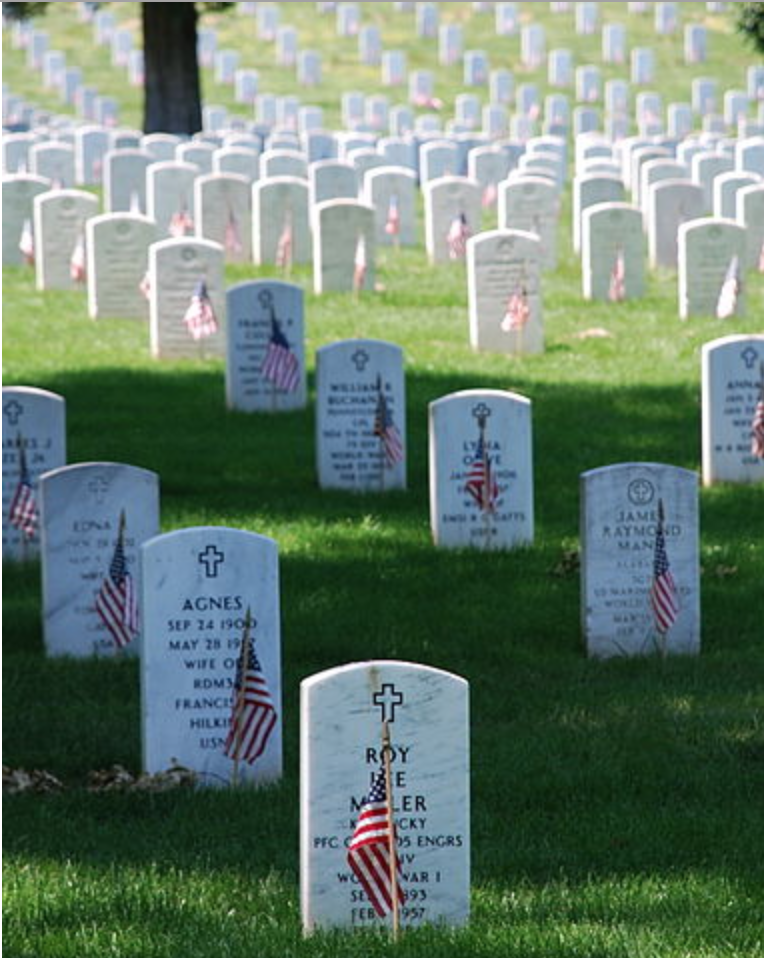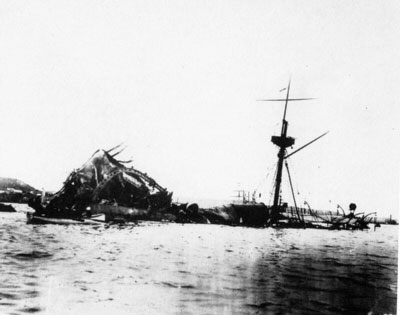The McMurray and Benjamin Soldiers at Camp McKinley, Des Moines, Iowa, 1898

McMurray Family, Benjamin Family (Click for Family Tree)
[Are you related? Yes, if you are a descendant of the Jasper County Iowa McMurray, Benjamin, or Lambert families. This would include having Dr. Edward A. McMurray, Dr. Herbert McMurray, or Maude “Midge” McMurray Cook as ancestors, and there are many other branches from this family.]
“SAD GOODBYES OF LOVED ONES” was one of the headlines in the 16 May 1898 issue of The Newton Daily Record. The day before, a Sunday, an extra train was arranged to take Newton, Iowa families to Camp McKinley in Des Moines, Iowa to spend a last day with their sons, brothers, fathers, cousins, and neighbors before they went off to fight in the Spanish-American War. “The parting scenes in the evening made a sad picture indeed,” the paper stated. “The boys are anxious to be off, but of course all are thinking more seriously of the uncertainty of what the future may have in store for them.” The plan was that the unit would leave for New Orleans soon.
Our ancestors were not a part of this parting scene, however. Medical examinations had taken place by the 10th of May, and sadly, William Elmer McMurray was rejected, although we do not know the reason. His brother Harry James McMurray was elected as 2nd Lieutenant of the company on the 10th, but then he too, along with three other men from Co. L, failed the medical exam. “The boys were deeply disappointed but there was no use of kicking,” per The Record. Even with those losses for medical reasons, the company had 11 members more than what was needed, so additional men also made the sad trip home. We can imagine the hurt, the disappointment, and the range of emotions those young men felt, especially with their cousins still in a unit that was going off to a foreign war. Imagining the reactions of the parents too is not hard- how do you reconcile your son’s disappointment (times two for Hannah Melissa Benjamin McMurray and Fred McMurray, the parents of Will and Harry) with your patriotism but also your relief to not have your baby going off to war?
Knowing what happened to the unit after they left Camp McKinley gives us an interesting perspective, however.
Iowa had four infantry regiments mustered for the Spanish-American War.
The 49th Iowa, made up of men from Tipton, Marshalltown, etc., was sent to Savannah Georgia for training, and was part of the occupying force in Cuba after the war in 1898-1899.
Iowa’s 51st Infantry mustered men from Des Moines, Oskaloosa, etc., and were transported to San Francisco, CA for training. They then saw active duty in the Philippines, helping to put down the Philippine Insurrection that happened after the war..
The 52nd Iowa trained at Chickamauga Park, Georgia. The men in this unit and their families back home must have felt another connection to the Civil War as they were in the same area that Iowa troops had fought, and won, at Missionary Ridge on 25 Nov 1863. The 52nd then returned to Camp McKinley in October, 1898, and were quartered in barns that had been overhauled to prepare for the cold winter. They expected to be shipped out on 30 Oct., however with Spain surrendering on 16 July 1898 and a treaty in progress, they were mustered out on 30 Oct 1898, never seeing foreign service since the war was only ten weeks long.
And then there was the 50th Iowa Infantry, from Newton and thereabouts. Lieut. Col. Elliott Ellsworth Lambert was made full Colonel, and was in command of the entire Brigade at one point; Roland E. Benjamin may have still been in the unit, but we will leave that for other researchers to determine. The 50th shipped south from Des Moines to Jacksonville, Florida, arriving 24 May 1898. Their camp was a flat section of sandy land outside the city called “Camp Cuba Libre” since one of the reasons for the war was independence for Cuba from Spain. The men drilled and completed target practice day after day, training for their planned liberation of Havana, Cuba.
Camp Cuba Libre had up to 30,000 men living there, with supplies very scarce at the beginning. Eating utensils had not arrived so the men ate off of shingles with their fingers. Uniforms were only available in small numbers, and by the time some of the men got theirs, the uniforms of others had already worn out. Some supplies were purposefully withheld by the administration to help ‘toughen’ the men, such as tent floorboards, and medical supplies were so short that the camp had to ask the Red Cross for assistance.
Once the rainy season began in Florida, things got even worse. Flooding began in the camp. Without wooden floorboards in their tents there was no hope of staying out of the watery muck. The soldiers built new barracks that were elevated, however they still had to move around through the flooded portions of camp. (Please see a picture here that should be public domain due to its age and that it was probably taken by a federal employee, but it is apparently copyrighted by number of organizations so cannot be posted.)
Soldiers started getting sick, many with typhoid fever, which is a bacterial infection from contaminated water or food; it can also be transmitted between people due to poor sanitation. (It would have been challenging to build latrines in sandy soil with a water table close to the surface, and then the rains came…) The number of men visiting sick call increased as the rains continued, and some died, especially since antibiotics were not yet available. Female nurses, not yet common in the military, had to brave social ostracizing- they were considered loose women, especially by the camp surgeon. Catholic Lakota nuns and then Red Cross nurses from the North cared for the ailing men despite the constant suspicion and monitoring of their behavior.
Both officers and soldiers protested up the chain of command about the camp conditions and increasing sickness, and finally on 1 August they were given permission to move the camp to higher ground. This helped, but because of the long period of infection and bacterial shedding of typhoid, in just over three weeks from 10 Aug-5 Sep, 100-300 men were either relieved of duty due to illness or were in the hospital. Inspections were conducted and eventually improvements to sanitary conditions were made.
A cease-fire with Spain was signed on 12 August 1898.
The War Department ordered the 50th to return to Iowa on 12 Sep 1898. Sick men were carefully loaded into Pullman cars and the train transported the Regiment back to Des Moines, where they arrived on 17 Sep. Most men were given a 40 day furlough, and then they returned to Camp McKinley. They were mustered out there on 30 Nov 1898, never having left the continental United States.
Many of the sick went home and died soon after at their Iowa home, their illness acquired during their term of service. At least they were with their family at the end.
Of the 1,369 men of the 50th Iowa Infantry Regiment, none were killed or wounded in battle, however 32 died of disease, 30 were discharged for disease, wounds, or other causes, and 38 were transferred. Col. Lambert wrote many reports that detailed the events of the unit during its time in service.
One estimate is that 90% of the men who died during the Spanish-American War were lost to disease.
This information begs the question- would we be here if Will McMurray and Harry McMurray had been accepted into service during the Spanish-American War?
Notes, Sources, and References:
- “Co. L Will be First to Go,” The Newton Daily Record, 11 May 1898, page 4.
- “Among Camp McKinley Boys,” The Newton Daily Record, 16 May 1898, page 4.
- Iowa Civil War Monuments– https://www.iowacivilwarmonuments.com/cgi-bin/gaarddetails.pl?1222301210
- 52nd Iowa– https://www.spanamwar.com/52ndiowa.htm
- Warren Co Iowa Soldiers some war statistics– https://iagenweb.org/warren/military/spanishamericanwar.html
- Historical Sketch of the 50th Iowa Volunteer Infantry– https://genealogytrails.com/iowa/50th_regiment1.html
- “Iowa Spanish-American War Soldiers Who Died Due to Illness or Wounds”– https://iagenweb.org/history/military/SPW/SPAW_deaths.htm
- The Iowa National Guard has images along with a history at https://www.iowanationalguard.com/History/History/Pages/Spanish-American-War.aspx
The picture that is to the left of the descriptions of the 49th and 51st Iowa has a file name suggesting they are officers of the 50th in Jacksonville, FL. - An illustrated cover- envelope and stamp- from a soldier in Co. F, 50th Iowa may be seen at https://www.worthpoint.com/worthopedia/1898-cover-co-50th-iowa-camp-cuba-97337567
- Camp Cuba Libre- one may question the accuracy of some of this after seeing pictures of the camp. — https://www.spanamwar.com/campcubalibre.htm
Click to enlarge any image. Please contact us if you would like an image in higher resolution.
We would love to read your thoughts and comments about this post (see form below), and thank you for your time! All comments are moderated, however, due to the high intelligence and persistence of spammers/hackers who really should be putting their smarts to use for the public good instead of spamming our little blog.




